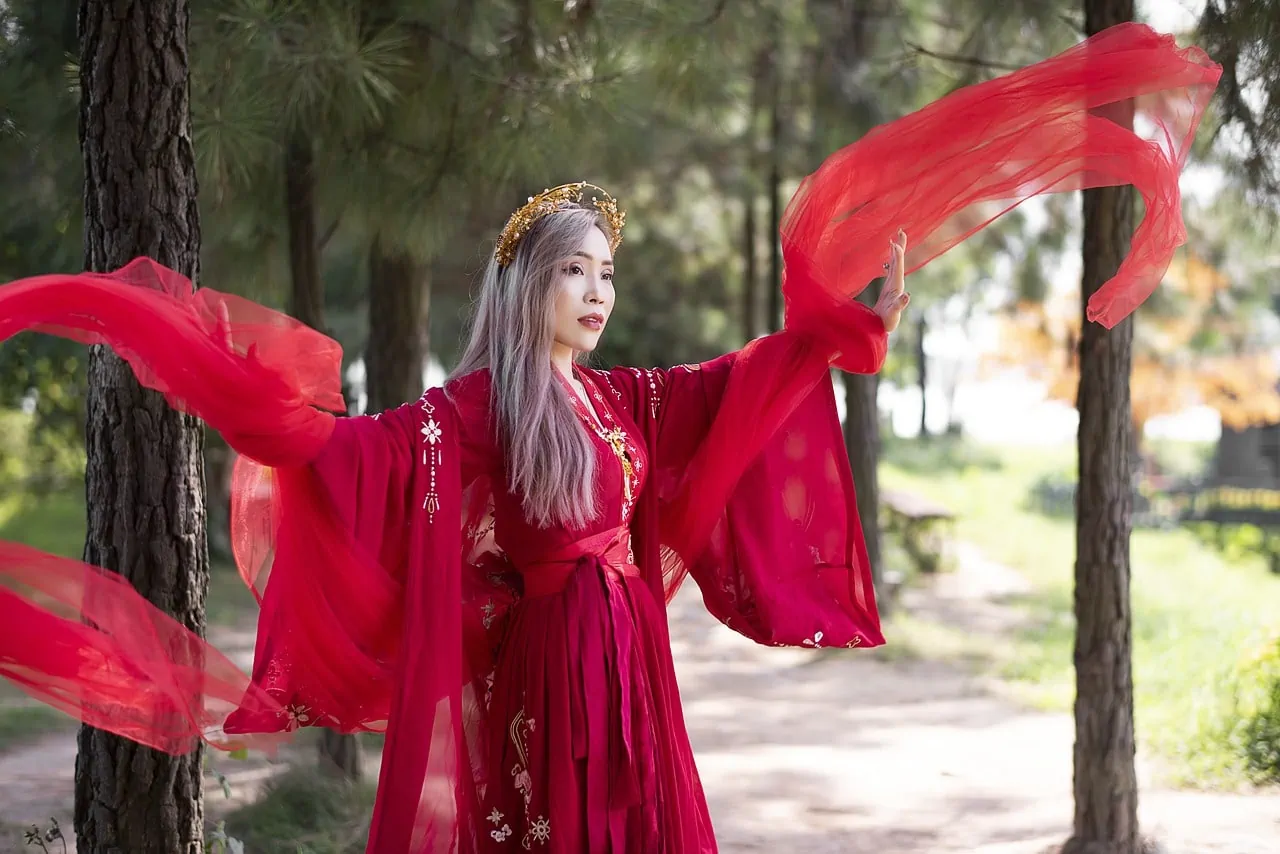
Table of Contents
Jewelry has been worn in China since ancient times, going back to the Neolithic age (around 5000 years ago).
While early Chinese jewelry was made of natural organic materials, over time, the jewelry-making processes became extremely sophisticated, featuring stunning jade jewelry, impossibly thin pendants, gilt-metal hairpins, flower-basket earrings, and puzzling motifs. For the Chinese, jewelry represented wealth, status, and even metaphorical beliefs.
Let’s take a look at the defining features of Chinese jewelry, the materials used, and how to wear Chinese jewelry if you aren’t from China.
History of Chinese Jewelry
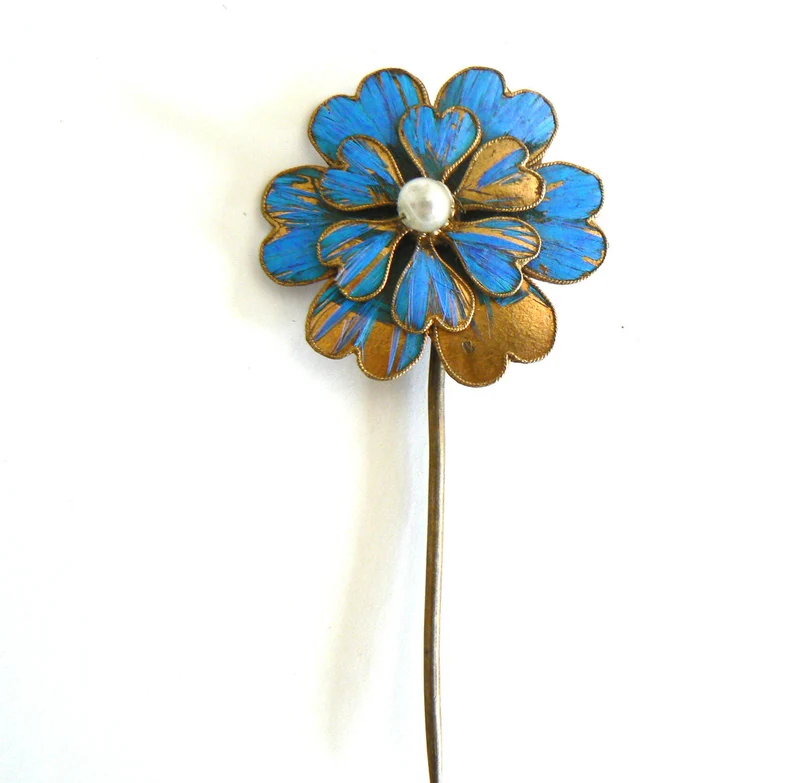
Over the centuries, jewelry evolved to represent the motifs and symbols that represented each Chinese dynasty.
The oldest Chinese jewelry comes from the Shang Dynasty (1600 BC). These were jade amulets, various hair ornaments, and embellished belts for men. Even these early pieces demonstrate the attention to detail and beauty that Chinese jewelry would become known for.
Gold became a popular metal during the Han and Tang Dynasties, used in hairpins, pendants, and other jewelry items. These were delicate, fine pieces made using complicated metallurgical processes.
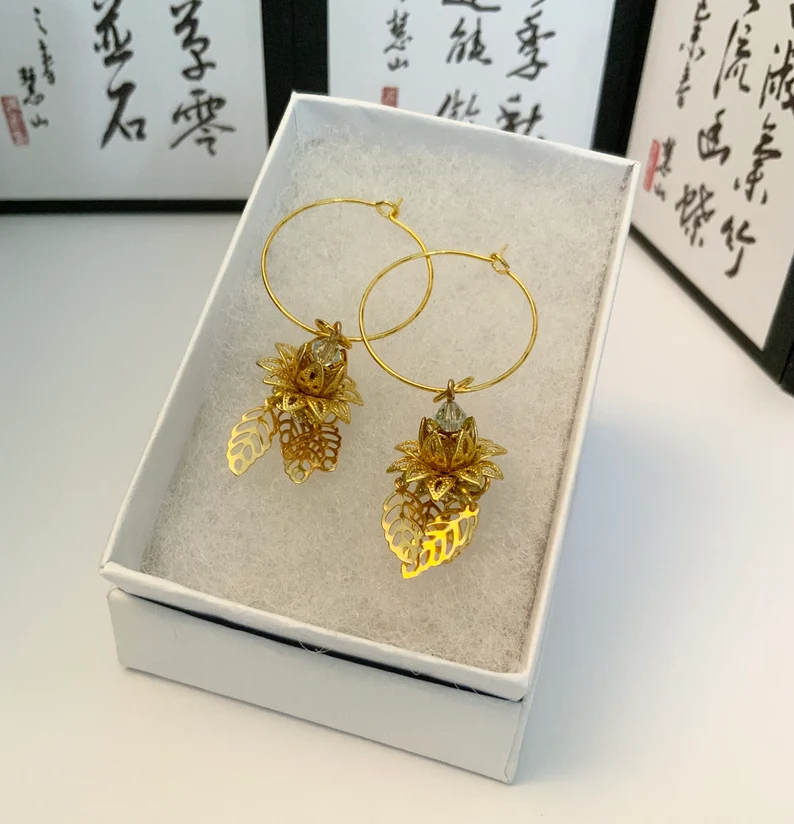
It was during the Ming and Qing dynasties (1368 AD to 1912 AD) that jewelry-making techniques became more sophisticated. The occupation of jeweler was an important one under the Ming Dynasty and was only conducted by a few experts. Gold, silver, and jade were the most commonly used materials.
However, the use of other gemstones also became widespread, and techniques such as filigree, where thin metal pieces were twisted to create beautiful and complex patterns, became common.
Types of Chinese Jewelry
Chinese jewelry includes earrings, rings, bracelets, anklets, necklaces, hairpins, and bangles.
1. Rings
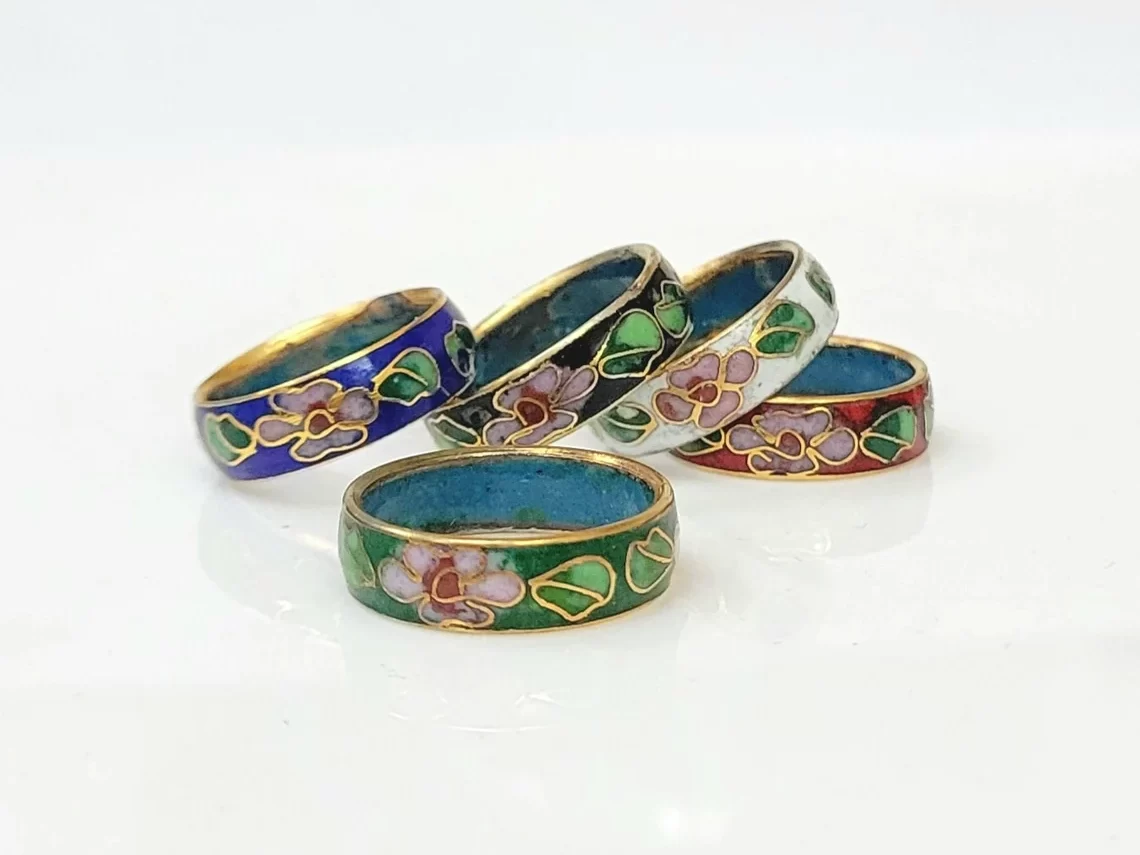
The history of rings in China is a fascinating one. It began as an image of betrothal in the Southern Song Dynasty, much like in ancient Egypt. It soon grew to become the most important piece of jewelry at a wedding after the advent of Christianity in China in the Middle Ages.
Rings signified social status. Couples would exchange rings according to their social status within the society – grand officers were given gold ones, while farmers wore silver or jade-like stones. The custom remains the same today, although it has been modernized.
In recent times, people wear rings to add beauty to their fingers as well as to trace a person’s marital status. This often depends on which finger the ring is worn on.
2. Bracelets
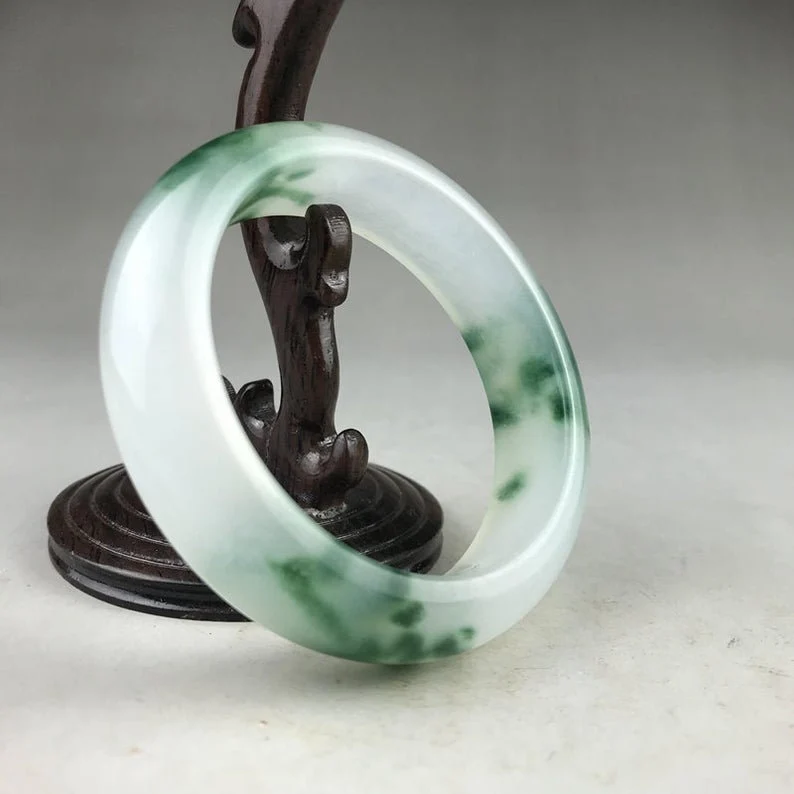
Bracelets are another notable type of jewelry in China, and one of the earliest. Archaeologists have found tangible evidence to prove human beings wore bracelets in historical Mesopotamia, Egypt, and China. These early bracelets were made from shells, grasses, twigs, and shells.
Later, other materials such as copper and bronze were discovered and used to make bracelets; but after the Bronze Age (which spanned from 3300 B.C. to 1200 B.C), artisans started creating bracelets made of silver and gold. These bracelets were arguably more decorative, bedecked with stones and shells. At this time, jewelry became a symbol of status and wealth.
3. Hairpins
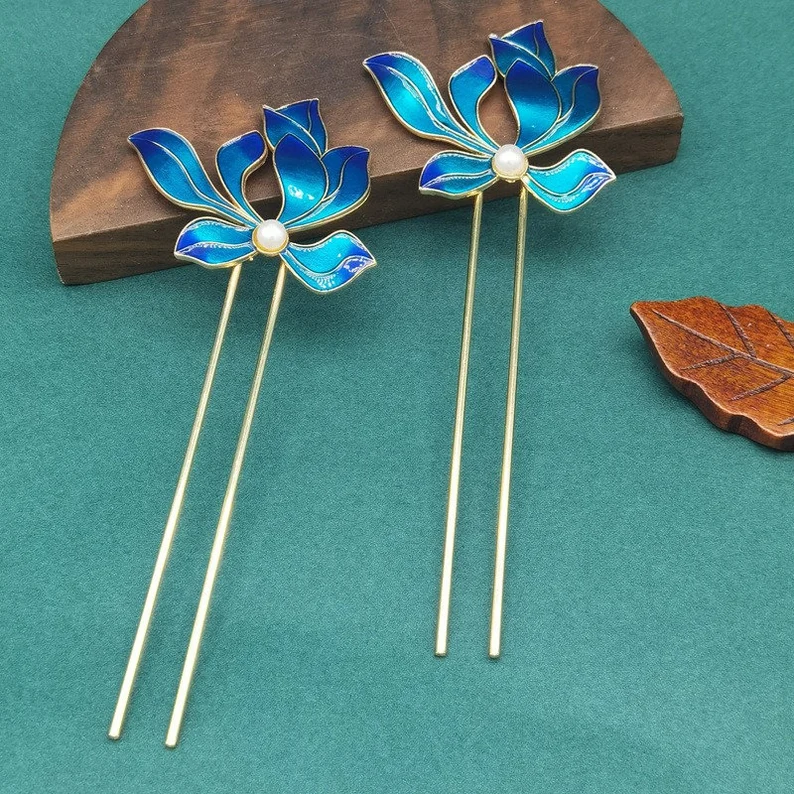
Hairpins are an important variety of Chinese jewelry and are one of the earliest types of jewelry from the Chinese tradition. They are related to many Chinese cultural traditions and customs. They were also used as day-to-day hair embellishments in historical China. Chinese ladies would wear hairpins, regardless of their social rank.
The materials and elaborate nature of hairpins were indicators of the wearer’s social status. Hair pins can be made out of several materials, such as gold, silver, ivory, bronze, bamboo, carved wood, tortoiseshell, bone, and more.
4. Earrings
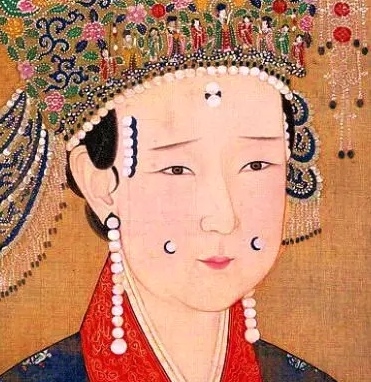
Earrings originated around the Neolithic period in China. Initially, they were used as amulets as well as for decoration. Erdang, which was an earring that pierced through the earlobe, was one of the most popular types of jewelry worn by Chinese women. The er dang was sometimes worn on a single ear.
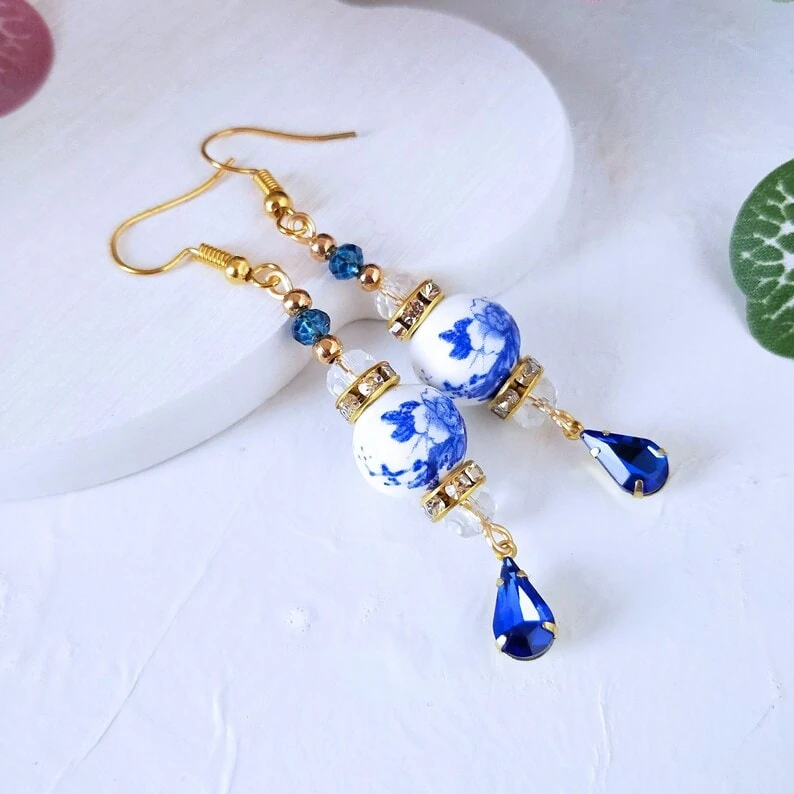
While earrings for men weren’t popular, sometimes young Chinese boys would wear a single earring as an amulet against evil spirits.
The Importance of Jade in Chinese Jewelry
Of all the materials used in Chinese jewelry, jade takes prominence. Jade is certainly the most famous because of its uniqueness and symbolism.
Jade is considered a religious stone that connects the wearer to the non-secular world and their ancestors. Apart from this fact, it also has soothing properties. It’s said to inspire confidence, good luck, and bring prosperity. It’s said that jade can assist in making proper decisions and helps the heart find compassion. Jade also symbolizes strength, luck, and good health.
Jade continues to be a fashionable and meaningful gemstone for jewelry and is highly coveted in China.
Characteristics of Chinese jewelry
Chinese traditional jewelry has several defining features. Here are some of them.
- The pieces are characterized by intricate metalwork, such as filigree.
- Chinese jewelry tends to be round or spherical and is worn on the arms, neck, or wrists.
- Animal motifs are common in Chinese jewelry and are often believed to hold various meanings. For example, the dragon symbolizes good fortune and power. The phoenix stands for good fortune, opportunities, and luck. Other animals like birds, tigers, monkeys, and bats may also signify luck.
- The color/shade of the jewelry is also important. For instance, a stone’s color may signify power. An example is a popular jade.
- There are patterns associated with Chinese culture in different dynasties, and their applications were strict. The more the patterns; the greater the importance a person had in society. Some of these include:
- Qun Shan (Mountain): Persistence, Steadiness, and Firmness
- Xing Cheng (Star): Enlightenment, Illumination
- Loong (Dragon): Unpredictable, Mysterious
- Huo (Fire): Bright, Promising
- Hua Chong (Colorful Bird or Flower): Beautiful, Intelligent
- Fen Mi (Rice): To Nurture
- Fu (Axe): Stay resolute or decisive
Where Can I Buy Chinese Jewelry
While the best place to buy Chinese jewelry is in China the next best option is online.
Chinese jewelry varieties are available in local stores as well as on E-commerce sites, such as Etsy and Amazon.
Wrapping Up
Chinese jewelry has lasted the test of time. Emerging thousands of years ago, these pieces hold distinctly Chinese characteristics and continue to be coveted. Many of the ancient Chinese jewelry designs are still stunning to look at, with their intricate metalwork and precious gemstones.
Today, Chinese jewelry influences have gone global. Their influence can be found in jewelry collections around the world.









